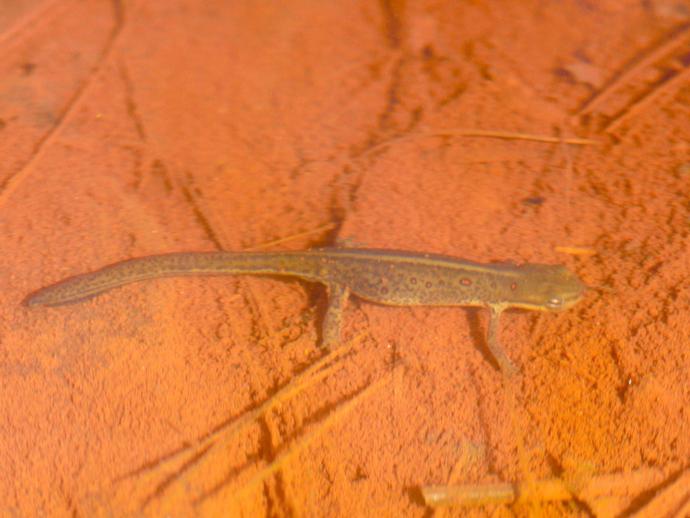April 13, 2021
It's time for today's edition of #BenInNature presented by our friends at Carter Bank & Trust!
This week we're looking at cool critters that museum staff recently spotted at the Patrick County home of a good friend of the museum. This little guy is Notophthalmus viridescens, better known as the eastern newt!
If the picture looks a little odd, it's because the subject was underwater when it was taken. If you're a #BenInNature superfan (and I know there are literally tens of you out there), the eastern newt might ring a bell. In a couple of previous posts, I've highlighted the "red eft" stage of this newt's lifecycle.
These newts have three stages of life: as larvae, they're completely aquatic and have gills. In the red eft stage, they shed their gills, turn bright orange, and move to land, where they wander in search of a new pond to call home. Finally, after two or three years, they return to the water and become aquatic adults.
This particular eastern newt is one of the aquatic adults, and unlike the red eft, its skin is a dull olive color and it has a paddle-like tail that allows it to swim easily. Our museum friend had a pond that was absolutely full of these little fellows; if you're walking past a pond this spring, keep an eye peeled!
ABOUT #BenInNature
Social distancing can be difficult, but it presents a great opportunity to become reacquainted with nature. In this series of posts, Administrator of Science Ben Williams ventures outdoors to record a snapshot of the unique sights that can be found in the natural world. New updates are posted Monday - Friday, with previous posts highlighted on the weekends. This series of posts is made possible thanks to the support of VMNH Corporate Partner Carter Bank & Trust (www.cbtcares.com)
NATURE PHOTO IDENTIFICATIONS
If you discover something in nature that you would like help identifying, be sure to message us right here on Facebook with a picture (please include location and date of picture) and we'll have our experts help you identify it!

 Hours & Admissions
Hours & Admissions Directions
Directions

